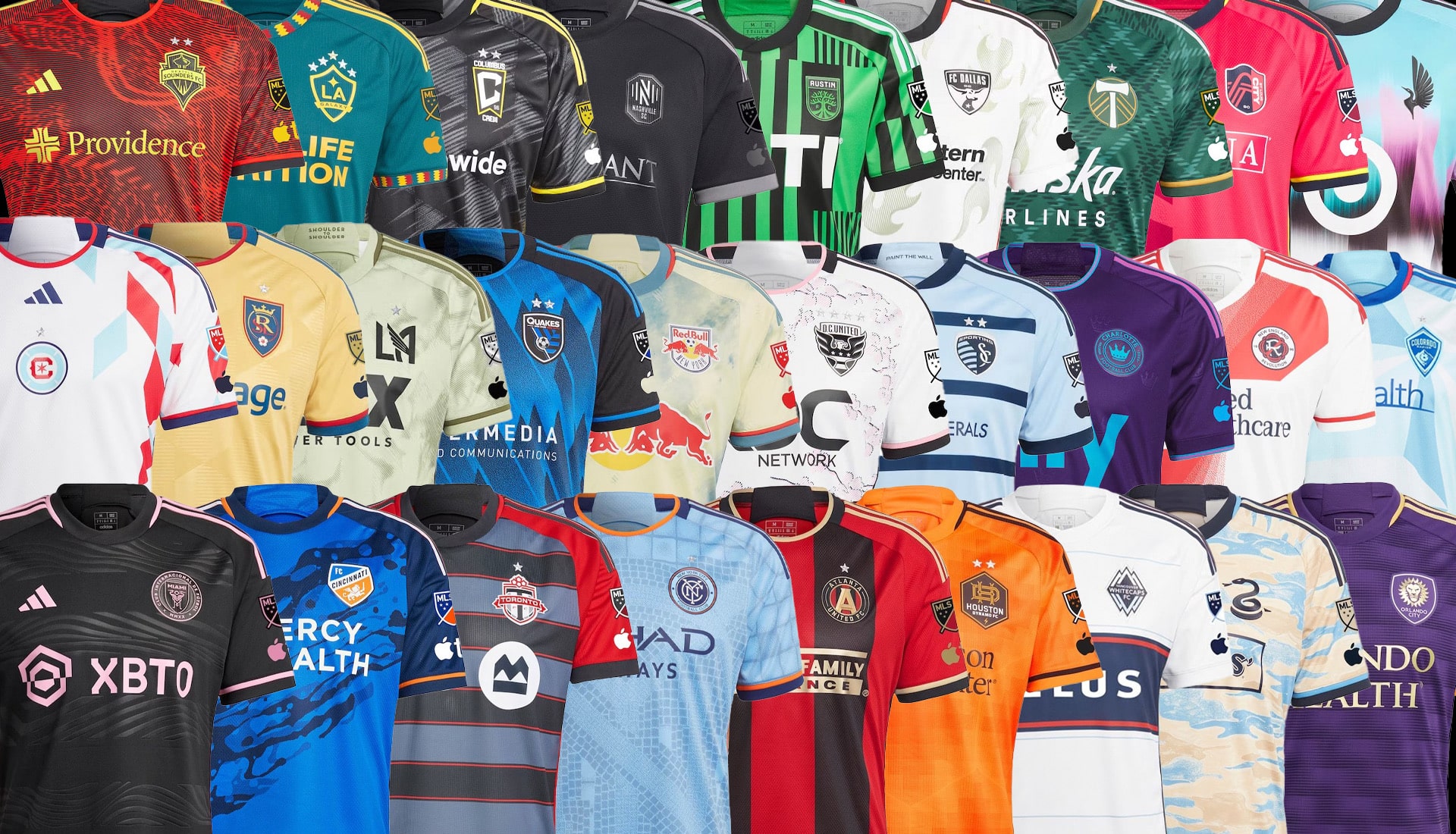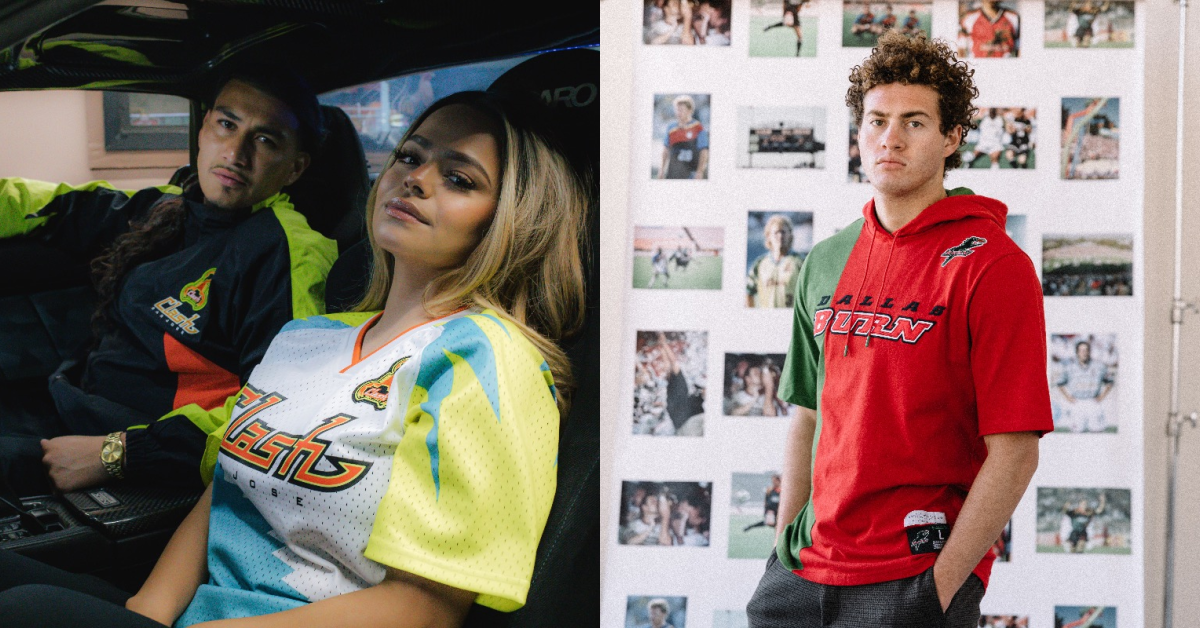Historical Significance and Evolution: Mls Retro Kits

The origins of MLS retro kits lie in the league’s early days, when teams sought to establish their identities and connect with fans. The first retro kits emerged in the late 1990s and early 2000s, often featuring designs inspired by the team’s original uniforms or historic moments.
As retro kits make a resurgence in the MLS, their vibrant designs evoke a sense of nostalgia. Among the league’s rising stars, 14-year-old link text here has emerged as a prodigious talent. His impressive skills and determination embody the spirit of both MLS’s past and future.
The classic stripes and bold colors of these retro kits serve as a testament to the league’s rich history, while the young players like link text here represent its promising future.
Retro kits have since become a staple of MLS culture, with many teams releasing new retro kits each season. The popularity of retro kits can be attributed to their nostalgic appeal, as they evoke memories of past eras and legendary players. Additionally, retro kits often feature unique and eye-catching designs that stand out from the more modern uniforms.
The vibrant hues and iconic designs of MLS retro kits evoke a nostalgic longing for the past. Like the enigmatic guitarist Quinn Sullivan , whose bluesy riffs transported listeners to a bygone era, these jerseys capture the essence of soccer’s golden age.
From the bold stripes of the Seattle Sounders to the celestial stars of the Los Angeles Galaxy, each retro kit tells a unique story, connecting fans to the rich tapestry of the sport’s history.
Iconic Retro Kits, Mls retro kits
- LA Galaxy “Galaxy Gold” Kit: This kit, first worn in 1996, is one of the most iconic retro kits in MLS history. The gold jersey with purple trim is a nod to the team’s original colors and has been worn by some of the Galaxy’s most famous players, including Landon Donovan and David Beckham.
- New York Red Bulls “MetroStars” Kit: This kit, worn from 1996 to 2006, pays homage to the team’s days as the New York/New Jersey MetroStars. The red and black striped jersey is a classic design that has been revived several times in recent years.
- Seattle Sounders “Rave Green” Kit: This kit, first worn in 2009, is a nod to the team’s original green and blue uniforms. The Rave Green kit has become a symbol of the Sounders’ success and is one of the most popular retro kits in MLS.
Reasons for Popularity
- Nostalgia: Retro kits evoke memories of past eras and legendary players, which appeals to fans of all ages.
- Unique Designs: Retro kits often feature unique and eye-catching designs that stand out from the more modern uniforms.
- Sense of History: Retro kits help to connect fans with the team’s history and traditions.
- Collectibility: Retro kits are often highly sought-after by collectors, which further adds to their popularity.
Design Elements and Aesthetics

MLS retro kits are a celebration of the league’s history and culture, and their design elements reflect that. Common elements include bold colors, retro patterns, and typography that evokes the past eras of soccer.
The influence of past eras and fashion trends is evident in the aesthetics of retro kits. For example, many teams use colors and patterns that were popular in the 1970s and 1980s, such as bright yellows, oranges, and blues. Some teams also incorporate retro typography into their kits, such as the use of serif fonts or block lettering.
Color Schemes
The color schemes of MLS retro kits are often inspired by the team’s history. For example, the Seattle Sounders’ retro kit features a green and blue color scheme that is reminiscent of the team’s original colors. The LA Galaxy’s retro kit features a black and gold color scheme that is inspired by the team’s early days in the league.
Patterns
Retro kits often feature patterns that are inspired by past eras of soccer. For example, the New England Revolution’s retro kit features a hoop pattern that is reminiscent of the kits worn by the team in the 1990s. The FC Dallas retro kit features a zigzag pattern that is inspired by the kits worn by the team in the 1980s.
Typography
The typography used on retro kits often evokes the past eras of soccer. For example, many teams use serif fonts that were popular in the 1970s and 1980s. Some teams also use block lettering that is reminiscent of the kits worn by teams in the early days of the league.
Cultural Impact and Marketing
MLS retro kits have become cultural icons, representing a nostalgic connection to the league’s past and a sense of belonging among fans. By donning retro kits, fans express their team pride and celebrate the legacy of their favorite clubs. This shared experience fosters a sense of community and strengthens the bond between fans and their teams.
MLS teams have recognized the marketing potential of retro kits and have employed various strategies to promote and sell them. Limited-edition releases, special promotions, and collaborations with popular culture icons have helped generate excitement and demand among fans. The retro aesthetic has also resonated with a broader audience, appealing to those who appreciate vintage fashion and nostalgia.
Commercial Success
The popularity of retro kits has had a significant impact on the commercial success of MLS and its teams. The sale of retro merchandise, including kits, has become a major revenue stream for the league. Additionally, the retro aesthetic has helped attract new fans and sponsors, contributing to the overall growth and popularity of MLS.